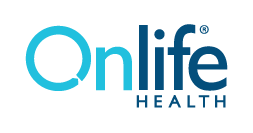Jan 2023 The Elusive Goal of Health Equity – How Health Plans Can Fuel Progress
Equal and fair access to healthcare is still elusive for many minorities and underserved groups in the United States.

Addressing the multiple factors that create this deeply rooted social issue requires the commitment of multiple stakeholders. Health plans play a vital role.
Here’s what you can do to support change.
PRIORITIZE SOCIAL DETERMINANTS OF HEALTH
For too long, healthcare has focused on treating the individual as a separate, isolated unit rather than understanding each person within the larger context of personal environment and local community. Fortunately, more health plans are implementing new strategies to address Social Determinants of Health (SDoH), or those circumstances that influence the well-being of people within their communities. These determinants include everything from food and housing security to healthcare access, health literacy, public safety, and transportation. SDoH directly influence up to 80 percent of health outcomes and are the key drivers of health inequities and disparities.
To address these vulnerabilities in your member population, it’s critical to first gain an in-depth, data-based understanding of which communities are adversely affected by SDoH and the specific risk factors that need to be addressed. Here’s one tool (link to info on Onlife’s SDoH Community-Based Index) that provides sophisticated mapping and data analysis to help you understand the multiple social dynamics that impact health and well-being in each of the 73,000 census tracts in the United States.
INVEST IN COMMUNITY HEALTH WORKERS
Today we’re able to collect and analyze detailed data that generates an increasingly accurate portrait of each consumer. But there are limits to what data can achieve.
Data is an abstraction. Just as a map is not the territory, data is not the actual person. It is only a digital synopsis. There are some types of information about each individual that can only be acquired in person by a doctor or other healthcare professional. This is especially true for SDoH, which varies from person to person within the same community.
Gaining this local knowledge requires a more “boots-on-the-ground” approach delivered by Community Health Workers (CHWs). CHWs live in the same communities as their members, giving them an in-depth local knowledge of the SDoH risks in the neighborhood. And because CHWs provide the first line of care in a member’s home, they’re better able to report on the specific SDoH vulnerabilities that impact each patient.
CHECK DATA FOR INCOMPLETE INFORMATION
Gaps in data limit the ability of health plans to address health inequities. You can’t address a problem if you don’t know it exists. A recent California study found that two-thirds of commercial health plans in the state were missing data about race for more than half their membership. As a result, these health plans lacked the knowledge to effectively address health inequities. One cause for these gaps in data may be due to the reluctance of some members to share race/ethnicity information with their health plans.
This is one reason why health plans need to more clearly address members’ concerns around confidentiality. In addition, standardization of data collection would help to ensure that race/ ethnicity information is collected across all lines of business.
CREATE PERSONAS
Personas are just one example of how data can be leveraged to address health inequities. A persona is a subgroup of users who share similar patterns across a set of variables. For example, Onlife Health has developed six personas based on SDoH needs. When custom content is created specifically for a member’s SDoH persona and tagged accordingly, engagement metrics reveal that members are more than twice (2.1x) as likely to click on the information compared to content created or identified for other SDoH personas. The effectiveness of personas could be amplified by using cohorts, which can combine multiple factors to provide personalized content at a more granular level.
IMPROVE HEALTH LITERACY
Health literacy is the ability of individuals to manage their own well-being by applying healthcare information and services to their own medical situation. According to the CDC, almost nine out of 10 adults struggle to understand and use both personal and public health information when it’s filled with unfamiliar or complex terms.
When lacking health literacy, a person is less likely to stick with a treatment regimen or understand a prescription label. Health plans have several opportunities to improve health literacy. These include providing adult education and English language instruction in addition to educational materials that are culturally relevant and written in the member’s primary language. These materials should use plain language and visual aids to help readers understand the information, which is often too complex and filled with medical jargon. Also, consider creating provider networks that are representative of a community’s demographics.
THE IMPACT OF EQUITY
At the most fundamental level, health equity is about giving everyone a fair and just opportunity to be as healthy as possible. But there are also practical benefits. Offering equitable care produces a more efficient healthcare system with fewer doctor visits, reduced ER utilization, less spending per patient and better outcomes overall. Health plans are in a unique position to advance health equity in our system, starting with the strategies discussed above.
If you want to learn more about how your organization can take the right next steps to create more equitable care, please contact us for a personal consultation.

